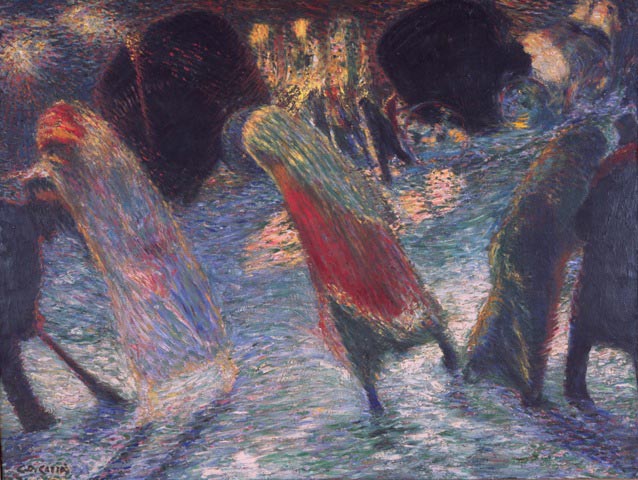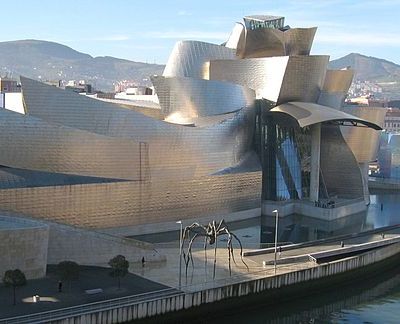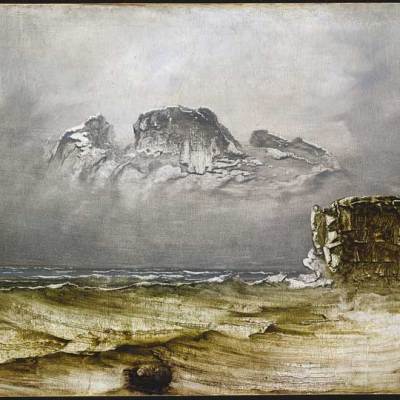In December an audience spilling out of a theatre into a cold night is a familiar sight. Carlo Carrà’s Leaving the Theatre captures figures outside La Scala in Milan in 1910, wrapped up against the elements, dispersing under glittering streetlights. The painting, one of London’s best examples of early Futurism, requires urgent restoration work. The Estorick Collection’s director, Roberta Cremoncini, told us about the public appeal to raise £3000 to fund its conservation.
How would you describe the significance of Carrà’s Leaving the Theatre?
Among the most popular works belonging to the Collection, the painting is also one of the most important and representative works of early Futurism, painted in the ‘Divisionist’ style typical of the movement’s initial phase. It was created around a year before Carrà and his colleagues encountered Cubism in the autumn of 1911, and captures the dynamism of modern city life in shimmering dashes of paint that create a vivid sense of animation and flux. In his autobiography, Carrà himself highlighted the significance of the painting, stating: ‘I am of the opinion that this work, completely ignored in Italy, is one of the pictures in which I best expressed the conception I then had of painting.’
How did the picture end up as part of the Estorick Collection?
Leaving the Theatre was displayed in the famous 1912 Futurist exhibition at the Bernheim-Jeune Gallery, Paris, being purchased by the banker Max Rothschild when the show travelled to London’s Sackville Gallery later that year. It passed into the Estorick Collection in late 1958. Over the years it has featured in many other landmark exhibitions, such as ‘Futurismo & Futurismi’ (Venice: Palazzo Grassi, 1986), ‘Italian Art in the 20th Century: Painting and Sculpture 1900–1988’ (London: Royal Academy of Arts, 1989), ‘Futurism’ (London: Tate Modern, 2009) and, most recently, ‘Italian Futurism 1909–1944: Reconstructing the Universe’ (New York: Guggenheim Museum, 2014).
What sort of conservation treatment does the painting require?
Remedial conservation has taken place in the past, but it has now reached the stage where more serious work needs to be carried out. The painting will be removed from its original stretcher, which will have strips of wood added to its perimeter and be reinforced prior to the work being remounted. The original stretcher will be kept as it is also of historical significance, documenting the exhibition history of the work through the numerous labels and stickers attached to it. Conservation will be completed by Ezio Buzzegoli – a specialist in his field who has worked on the restoration of Michelangelo’s Doni Tondo in Florence and is part of the FUTURAHMA Research Project.
It is essential for this work to be completed now to prevent further, more permanent, deterioration and to ensure that the painting can continue to be loaned for important exhibitions. Loaning works is vital to give a deeper understanding of the Futurist movement and to promote the Estorick Collection worldwide.
Why are you seeking to fund the restoration through public donations?
This is the first fundraising campaign run by the Estorick Collection. It is an opportunity to raise funds, but also to engage and begin a dialogue with our supporters. We hope the campaign will throw a spotlight on to one of the key works in our collection and help raise the profile of the museum and of Futurism in London. Restoration will take place in the galleries, with those who have donated invited to see the conservation work taking place.
The Estorick have raised just over half of the £3000 required for the work to take place. You can donate through their page on the National Funding Scheme website or by sending a text message to give £5: Text ESTC001 to 70970.
Related Articles
Reframing Futurism at the Guggenheim (Victoria Dreesmann)
London’s Italian art invasion (Rosalind McKever)
Review: ‘Gerardo Dottori: The Futurist View’ at the Estorick Collection (Jon Day)
Review: Pablo Echaurren at the Estorick Collection (Rosalind McKever)



